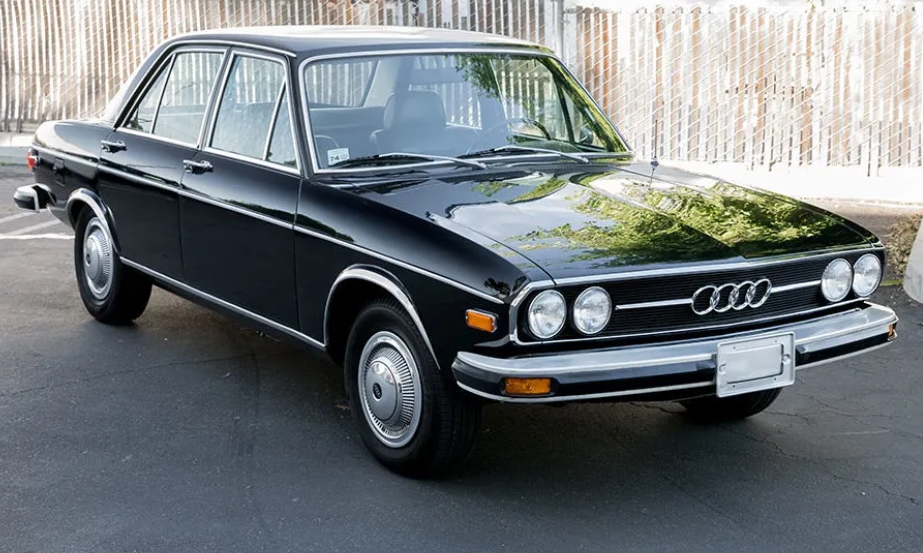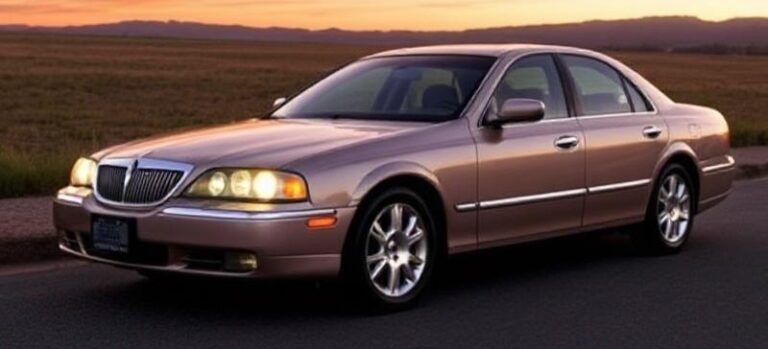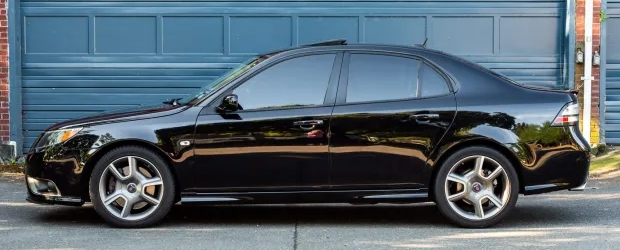The Evolution of the Audi 100
The Audi 100 stands as a significant model in the history of German automotive engineering, representing Audi’s evolution from a niche manufacturer to a global luxury brand. Launched in the late 1960s, the Audi 100 marked Audi’s first ambitious foray into the executive car segment, setting the stage for future models and technological innovations. Over its lifespan, the Audi 100 underwent multiple generational changes, each bringing advancements in design, technology, and performance, with various models and trim levels tailored to diverse markets and customer preferences.
This article traces the complete evolution of the Audi 100, from its inception in 1968 through its various generations, ending with its eventual replacement by newer models in the early 2000s.
First Generation (C1): 1968–1976
Introduction and Development
The first-generation Audi 100, internally designated as the C1, was introduced in 1968. Developed under the leadership of Audi’s then-CEO, Dr. Franz J. Pischinger, the model was designed to compete in the executive car segment, primarily targeting markets such as Germany, Switzerland, and Austria.
Production Years: 1968–1976
Design and Engineering
- Body Styles: Sedan (limousine), station wagon (known as the Audi 100 LS Avant)
- Platform: Based on the Audi F103 platform, sharing components with the DKW F102
- Dimensions: Approximately 4.4 meters in length
- Engine Options:
- 1.9L I4 engine (initially producing about 80 PS)
- 2.0L I4 engine (later versions with increased power)
- Transmission: 4-speed manual, with optional 3-speed automatic transmission (introduced later)
Models and Trim Levels
Initially, the Audi 100 was offered with basic trim levels, reflecting the era’s minimalist design ethos.
- Standard Model: Basic, with minimal interior amenities
- LS (Luxury Sport): Introduced later, offering more comfort and features
- Engine Variants:
- 1.9L, 80 PS (standard)
- 2.0L, 102 PS (later models)
Notable Features and Innovations
- First Audi model to feature front-wheel drive, which was innovative at the time.
- Aerodynamic styling, with a streamlined design that influenced future Audi models.
- Mechanical fuel injection system (Bosch D-Jetronic) introduced in some versions, enhancing performance and efficiency.
Market and Reception
The C1 was well-received in its target markets, appreciated for its build quality, comfort, and technological features. However, it faced stiff competition from Mercedes-Benz and BMW in the executive segment.
Second Generation (C2): 1976–1982
Development and Launch
The second generation, designated C2, was launched in 1976, showcasing significant design and technological improvements. It was the first Audi 100 to adopt the now-iconic “B4” styling and advanced engineering features.
Production Years: 1976–1982
Design and Engineering
- Body Styles: Sedan and station wagon (Avant), with a more modern, aerodynamic design
- Platform: Development of the new B2 platform
- Dimensions: Slightly larger, emphasizing interior space
- Engines:
- 1.8L I4 (75–90 PS)
- 2.0L I4 (85–115 PS)
- 2.2L I4 (110–125 PS)
- 2.5L V6 (115–136 PS, introduced in later models)
- Diesel options included 1.6L and 1.9L engines
Models and Trim Levels
- Audi 100 LS: Base trim with essential features
- Audi 100 GLS: Upgraded trim with additional comfort features
- Audi 100 Avant: Station wagon variant
- Quattro Model: All-wheel-drive version introduced in 1978, marking Audi’s entry into the all-wheel-drive segment
Notable Features and Innovations
- Introduction of the Quattro all-wheel-drive system in 1978, a groundbreaking development that would define Audi’s rally and performance heritage.
- Enhanced aerodynamics with a more streamlined body.
- Introduction of fuel injection in some models.
- Improved safety features, including crumple zones and reinforced bodies.
Market and Reception
The C2 was praised for its technological innovations, especially the Quattro system, which gained fame in rally racing. It solidified Audi’s reputation as a technically advanced automaker.
Third Generation (C3): 1982–1991
Transition and Design
The third-generation Audi 100, known as the B3, was launched in 1982. It represented a significant departure in design, with a focus on aerodynamics, comfort, and technological sophistication.
Production Years: 1982–1991
Design and Engineering
- Body Styles: Sedan, station wagon (Avant), and coupe variants
- Platform: B3 platform, with a focus on safety and aerodynamics
- Dimensions: Larger and more spacious than previous generations
- Engines:
- 1.8L I4 (90 PS)
- 2.0L I4 (115 PS)
- 2.2L I4 (140 PS)
- 2.3L I4 (136 PS)
- 2.8L V6 (174 PS)
- Diesel options: 1.9L and 2.4L TDI (introduced later)
Models and Trim Levels
- Audi 100 C3 Standard: Entry-level model with basic features
- Audi 100 C3 SE: Mid-range with additional comfort and convenience features
- Audi 100 C3 Avant: Station wagon
- Audi 100 C3 Quattro: All-wheel drive versions, primarily in higher trims
- Audi 200 (later): The C3 platform also served as the basis for the Audi 200, a more upscale variant
Notable Features and Innovations
- Introduction of electronically controlled suspension (adaptive ride control) in some models
- Use of digital instrumentation in higher trim levels
- Introduction of the 20-valve turbocharged engines in later versions
- Front-wheel drive and quattro all-wheel drive options
Market and Reception
The C3 was lauded for its advanced safety features, comfort, and technological innovations. Its aerodynamic shape earned it the “aerodynamic” badge, and it became a staple among executive cars in Europe.
Fourth Generation (C4): 1991–1997
Development and Launch
The fourth-generation Audi 100, known as the C4, was introduced in 1991. It marked a significant leap forward in design, technology, and performance, aligning with Audi’s new corporate identity and design language.
Production Years: 1991–1997
Design and Engineering
- Body Styles: Sedan, station wagon (Avant)
- Platform: New Volkswagen Group B5 platform
- Dimensions: Larger and more refined, with an emphasis on aerodynamics and safety
- Engines:
- 1.8L I4 (125 PS)
- 2.0L I4 (115–125 PS)
- 2.6L V6 (174 PS)
- 2.8L V6 (193 PS)
- 4.2L V8 (280 PS, introduced later)
- Diesel options: 1.9L TDI, 2.5L TDI
Models and Trim Levels
- Audi 100 Avant: Station wagon
- Audi 100 Sedan: Executive sedan
- Audi 100 S4: High-performance model with turbocharged engines
- Audi 100 Quattro: AWD trim levels available across models
- Special Editions: Limited editions with sportier configurations and luxury features
Notable Features and Innovations
- Introduction of the multi-link suspension for improved ride and handling
- Adoption of the quattro all-wheel-drive system across the range
- Advanced safety features, including side airbags and ABS
- Integration of premium interior features, including leather upholstery and climate control
Market and Reception
The C4 was recognized for its build quality, technological sophistication, and comfort. It competed successfully with BMW 5 Series and Mercedes-Benz E-Class models.
Fifth Generation (B5): 1997–2004
Development and Launch
The fifth-generation Audi 100, known as the B5, was launched in 1997. It marked the transition into the modern era of automotive design and technology for Audi.
Production Years: 1997–2004
Design and Engineering
- Body Styles: Sedan and wagon (Avant)
- Platform: B5 platform, shared with the Audi A6
- Dimensions: Slightly larger, with more aerodynamic styling
- Engines:
- 1.8L turbo I4 (150 PS)
- 2.4L V6 (165 PS)
- 2.8L V6 (193 PS)
- 2.7L twin-turbo V6 (310 PS, S4)
- Diesel options: 1.9L TDI, 2.5L TDI
- Transmission: 5-speed manual, 6-speed manual, and 4/5-speed automatic options
Models and Trim Levels
- Audi 100 Avant: Station wagon
- Audi 100 Sedan: Base and higher trims
- S4: High-performance models with turbocharged V6
- Special Editions: Limited editions with sporty and luxury enhancements
Notable Features and Innovations
- Introduction of the Quattro GmbH models (now Audi Sport), especially the S4
- Advanced safety features, including optional side airbags and stability control
- Use of lightweight materials and improved aerodynamics
- Enhanced interior comfort and technology
Market and Reception
The B5 platform was praised for its performance, build quality, and technological features. The S4 became an icon among enthusiasts, cementing Audi’s reputation in the sporty executive segment.
.
THIS might be a great place to get your new car from!
Or for those who are into the “car flipping” business, here’s an excellent resource for you!

.
Transition and Legacy
In 2004, the Audi 100 was phased out and replaced by the Audi A6, which inherited many of its design philosophies and technological features. However, the legacy of the Audi 100 lives on through its influence on Audi’s design language, engineering standards, and technological innovations.
Conclusion
The Audi 100’s evolution from 1968 through the early 2000s reflects the company’s transformation from a relative newcomer into a leader in luxury and performance automotive segments. Each generation introduced new design elements, technological innovations, and performance capabilities that contributed to Audi’s reputation for quality, safety, and innovation.
From the pioneering front-wheel-drive models of the first generation to the technological marvels like the Quattro system and high-performance S4 variants, the Audi 100 remains a milestone in automotive history. Its various models and trim levels catered to a broad spectrum of customers, emphasizing luxury, performance, and innovation.
Today, the Audi 100’s lineage continues through successors like the A6, which carries forward its legacy of engineering excellence and technological sophistication.







